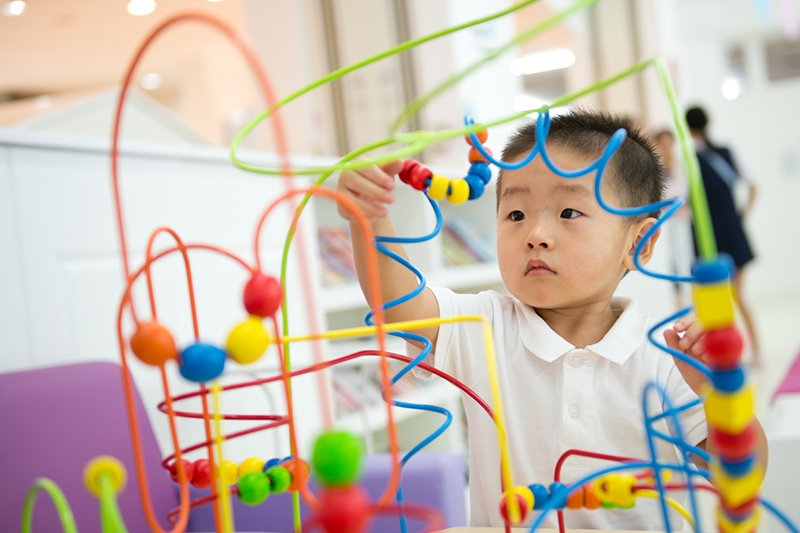Families For Life | Early Signs of Autism Spectrum Disorder

In very young children, it can be hard to see the early signs of autism spectrum disorder (ASD). But babies with ASD do develop differently from other infants, and there are some ‘red flags’ to watch out for.
Autism spectrum disorder and early development
Children all develop at different rates. Health professionals like General Practitioners (GP) and paediatricians check children’s development by looking at whether children are achieving various important milestones. These can be physical, emotional, social, linguistic or behavioural milestones.
In the first year of life, children’s social communication development is an important area to watch for early signs of autism spectrum disorder (ASD). Behaviour – or the lack of behaviour – like smiling, eye contact, and the use of gestures can show whether a child is developing in a typical or atypical way.
'When my son was 18 months old, a friend brought her nine-month-old baby to our house. I had so much fun with the baby – there was this constant interaction between us. I realised this was completely absent from my own little boy.'
– Mother of a disabled child, aged four
About early signs of autism spectrum disorder
Some early signs of ASD are usually seen in the first two years. These are listed below.
Some children have many of these early warning signs, whereas others might have only a few. Some behaviour signs can change over time, or become clearer as children get older. Also, any loss of social or language skills during this period is cause for concern.
The number of signs a child has from each list varies according to the age of the child and how severely the child is affected.
If your child is showing some or many of the signs from the lists of red flags below, talk to your health professional about a developmental assessment as soon as possible. Getting a diagnosis is the first step towards helping your child and getting services and support.
Social communication: red flags for autism spectrum disorder
Social interaction
The child:
doesn’t point to or hold up objects to show people things, share an experience or show that she wants something – for example, she doesn’t point to a dog and look back at you to make sure you’ve seen it too, or she drops a toy in your lap and walks away instead of holding it up and looking at you
doesn’t consistently respond to her name
doesn’t sound like she’s having a conversation with you when she babbles
copies what she hears from others or from the TV – for example, when you ask if she wants more drink, she echoes back ‘more drink’
doesn’t understand simple one-step instructions – for example, ‘Give the block to me’ or ‘Show me the dog’.
Nonverbal communication
The child doesn’t:
use gestures on his own – for example, he doesn’t wave bye-bye without being told to, or without copying someone else who is waving
use eye contact to get someone’s attention – for example, he doesn’t look at a parent then at a snack to show he wants it
smile at caregivers without first being smiled at or tickled.
Relationships and play
The child doesn’t:
show interest in other children
start games like peekaboo or pat-a-cake
do pretend play – for example, she doesn’t feed her teddy bear.
Behaviour: red flags for autism spectrum disorder
Restricted interests
The child:
has an intense interest in certain objects and gets ‘stuck’ on particular toys or objects – for example, he’ll flick the light switch off and on repeatedly, or will play only with cars
interacts with toys and objects in only one way, rather than more broadly or in the way toys were intended to be played with – for example, he only turns the wheels of a toy car rather than pretending to drive the car along the floor
is very interested in unusual objects or activities – for example, drains, metal objects or specific TV ads
focuses narrowly on objects and activities, like lining up objects.
Routines
The child is easily upset by change and needs to follow routines – for example, she needs to sleep, eat or leave the house in the same way every time.
Repetitive movements
The child repeats body movements or has unusual body movements, like back-arching, hand-flapping, arm-stiffening and walking on his toes.
Sensory sensitivities
The child:
is extremely sensitive to sensory experiences – for example, she gets easily upset by certain sounds, or will eat only foods with a certain texture
seeks sensory stimulation – for example, she rubs objects on her mouth, or face, or seeks vibrating objects like washing machines, or flutters her fingers to the side of her eyes to watch the light flicker.
© raisingchildren.net.au, translated and adapted with permission
Explore more